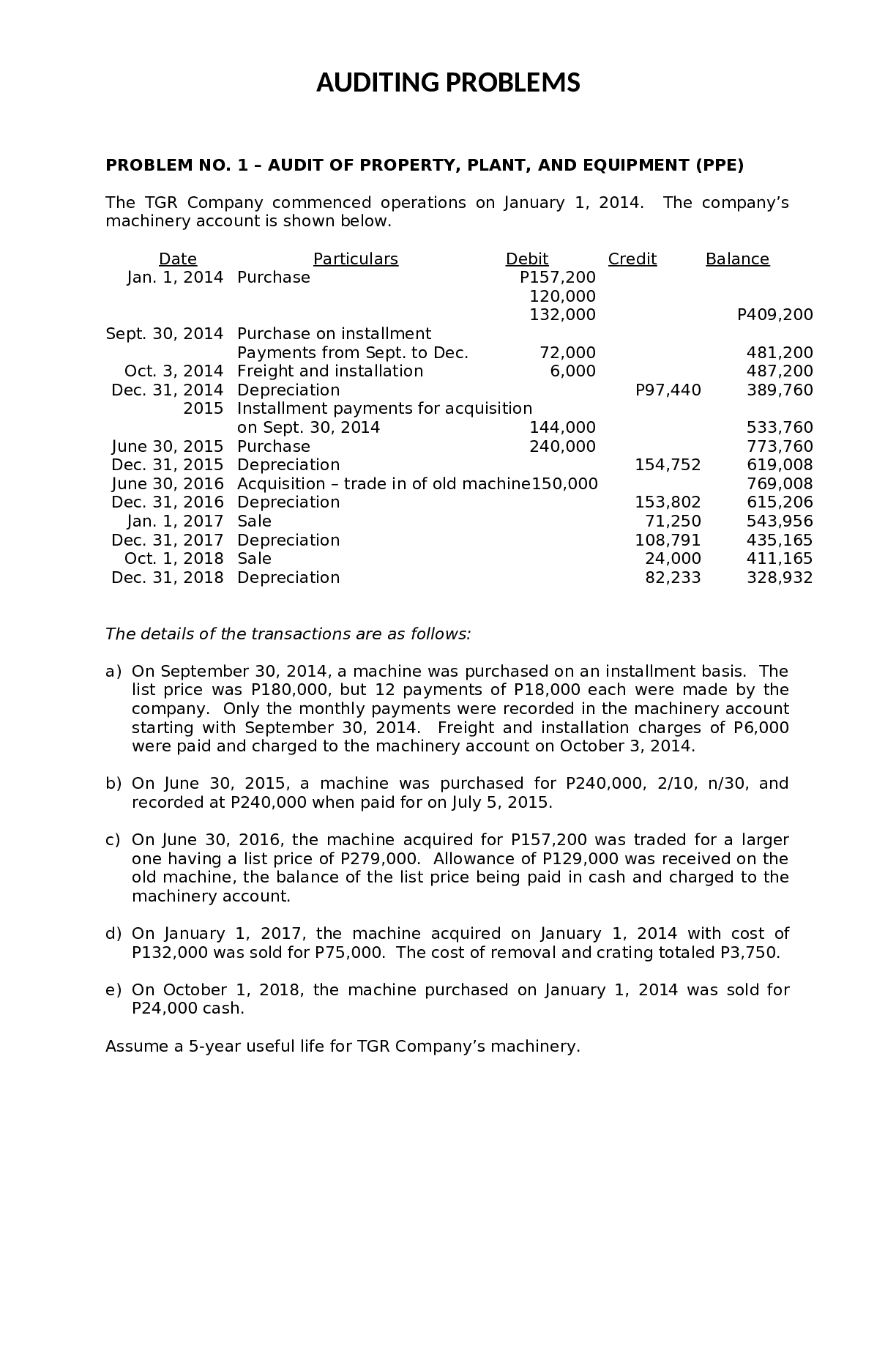Medical Studies > QUESTIONS & ANSWERS > ADV Med-Surg Questions Exam 2 questions with solutions and rationales. graded A+. any enquiry mail m (All)
ADV Med-Surg Questions Exam 2 questions with solutions and rationales. graded A+. any enquiry mail me at wamaesymonatgmaildotcom
Document Content and Description Below
A 68-year-old woman is scheduled to undergo mitral valve replacement for severe mitral stenosis and mitral regurgitation. Although the diagnosis was made during childhood, she did not have any symptom... s until 4 years ago. Recently, she noticed increased symptoms, despite daily doses of digoxin and furosemide. During the initial interview with the nice lady, the nurse would most likely learn that the client's childhood health history included: A) Chicken pox B) Poliomyelitis C) Rheumatic fever D) Meningitis - Ans-C) Rheumatic fever Rationale: Most clients with mitral stenosis have a history of rheumatic fever or bacterial endocarditis. Which of the following signs and symptoms would most likely be found in a client with mitral regurgitation? A) Exertional dyspnea B) Confusion C) Elevated creatine phosphokinase concentration D) Chest pain - Ans-A) Exertional dyspnea Rationale: Weight gain, due to fluid retention and worsening heart failure, causes exertional dyspnea in clients with mitral regurgitation. The nurse expects that a client with mitral stenosis would demonstrate symptoms associated with congestion in the: A) Aorta B) Right atrium C) Superior vena cava D) Pulmonary circulation - Ans-D) Pulmonary circulation Rationale: When mitral stenosis is present, the left atrium has difficulty emptying its contents into the left ventricle. Hence, because there is no valve to prevent backward flow into the pulmonary vein, the pulmonary circulation is under pressure. Because a client has mitral stenosis and is a prospective valve recipient, the nurse preoperatively assesses the client's past compliance with medical regimens. Lack of compliance with which of the following regimens would pose the greatest health hazard to this client? A) Medication therapy B) Diet modification C) Activity restrictions D) Dental care - Ans-A) Medication therapy Rationale: Adhering strictly to a dosage schedule and observing specific precautions are necessary to prevent hemorrhage or thromboembolism. Some clients are maintained on lifelong antibiotic prophylaxis to prevent recurrence from rheumatic fever Good dental care is an important measure in reducing the risk of endocarditis. A teaching plan to promote good dental care in a client with mitral stenosis should include demonstration of the proper use of: A) A manual toothbrush B) An electric toothbrush C) An irrigation device D) Dental floss - Ans-A) A manual toothbrush Rationale: Use of an electric toothbrush, an irrigation device, or dental floss may cause gums to bleed and allow bacteria to enter mucous membranes and the bloodstream, increasing the risk of endocarditis. A client has been admitted to the hospital with a diagnosis of suspected bacterial endocarditis. The complication the nurse will constantly observe for is: A) Presence of heart murmur B) Systemic emboli C) Fever D) Congestive heart failure - Ans-B) Systemic emboli Rationale: Emboli are the major problem; those arising in the right heart chambers will terminate in the lungs and left chamber emboli may travel anywhere in the arteries. The nurse is teaching a female client with multiple sclerosis. When teaching the client how to reduce fatigue, the nurse should tell the client to: A) Take a hot bath. B) Rest in an air-conditioned room. C) Increase the dose of muscle relaxants. D) Avoid naps during the day. - Ans-B) Rest in an air-conditioned room. Rationale: Lowering the body temperature by resting in an air-conditioned room may relieve fatigue; however, extreme cold should be avoided. A male client is having a tonic-clonic seizures. What should the nurse do first? A) Elevate the head of the bed. B) Restrain the client's arms and legs. C) Place a tongue blade in the client's mouth. D) Take measures to prevent injury. - Ans-D) Take measures to prevent injury. A female client with Guillain-Barré syndrome has paralysis affecting the respiratory muscles and requires mechanical ventilation. When the client asks the nurse about the paralysis, how should the nurse respond? A) "You may have difficulty believing this, but the paralysis caused by this disease is temporary." B) "You'll have to accept the fact that you're permanently paralyzed. However, you won't have any sensory loss." C) "It must be hard to accept the permanency of your paralysis." D) "You'll first regain use of your legs and then your arms." - Ans-A) "You may have difficulty believing this, but the paralysis caused by this disease is temporary." Rationale: Return of motor function begins proximally and extends distally in the legs. The nurse is caring for the male client who begins to experience seizure activity while in bed. Which of the following actions by the nurse would be contraindicated? A) Loosening restrictive clothing B) Restraining the client's limbs C) Removing the pillow and raising padded side rails D) Positioning the client to side, if possible, with the head flexed forward - Ans-B) Restraining the client's limbs A female client with Guillain-Barre syndrome has ascending paralysis and is intubated and receiving mechanical ventilation. Which of the following strategies would the nurse incorporate in the plan of care to help the client cope with this illness? A) Giving client full control over care decisions and restricting visitors B) Providing positive feedback and encouraging active range of motion C) Providing information, giving positive feedback, and encouraging relaxation D) Providing intravenously administered sedatives, reducing distractions and limiting visitors - Ans-C) Providing information, giving positive feedback, and encouraging relaxation You're caring for Lewis, a 67 y.o. patient with liver cirrhosis who developed ascites and requires paracentesis. Relief of which symptom indicated that the paracentesis was effective? A) Pruritus B) Dyspnea C) Jaundice D) Peripheral Neuropathy - Ans-B) Dyspnea Rationale: Ascites puts pressure on the diaphragm. Paracentesis is done to remove fluid and reducing pressure on the diaphragm You're caring for Betty with liver cirrhosis. Which of the following assessment findings leads you to suspect hepatic encephalopathy in her? A) Asterixis B) Chvostek's sign C) Trousseau's sign D) Hepatojugular reflex - Ans-A) Asterixis Rationale: Asterixis is an early neurologic sign of hepatic encephalopathy elicited by asking the patient to hold her arms stretched out. Asterixis is present if the hands rapidly extend and flex. You are developing a care plan on Sally, a 67 y.o. patient with hepatic encephalopathy. Which of the following do you include? A) Administering a lactulose enema as ordered B) Encouraging a protein-rich diet C) Administering sedatives, as necessary D) Encouraging ambulation at least four times a day - Ans-A) Administering a lactulose enema as ordered Rationale: You may administer the laxative lactulose to reduce ammonia levels in the colon. Develop a teaching care plan for Angie who is about to undergo a liver biopsy. Which of the following points do you include? A) "You'll need to lie on your stomach during the test." B) "You'll need to lie on your right side after the test." C) "During the biopsy you'll be asked to exhale deeply and hold it." D) "The biopsy is performed under general a [Show More]
Last updated: 1 year ago
Preview 1 out of 20 pages
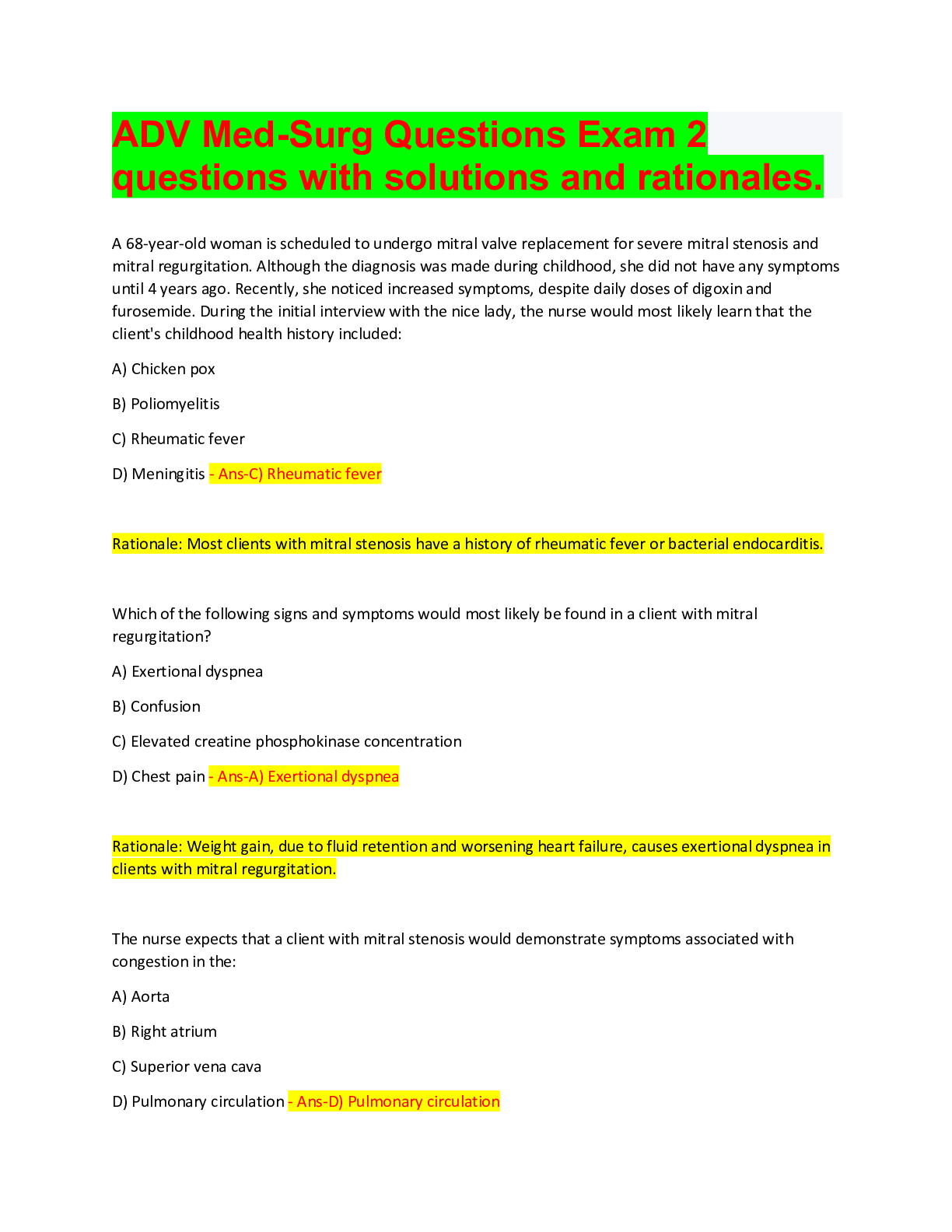
Reviews( 0 )
Document information
Connected school, study & course
About the document
Uploaded On
May 26, 2022
Number of pages
20
Written in
Additional information
This document has been written for:
Uploaded
May 26, 2022
Downloads
0
Views
66



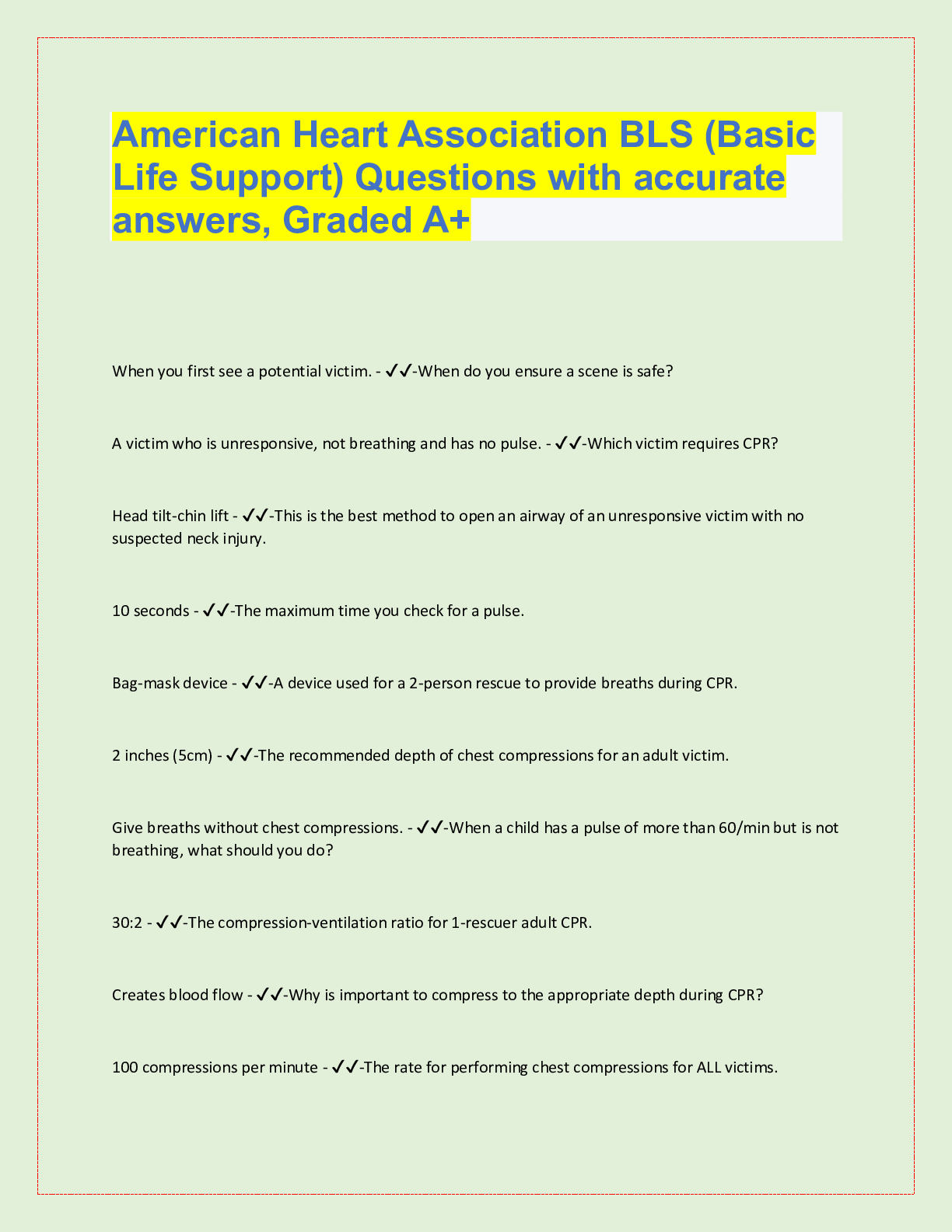


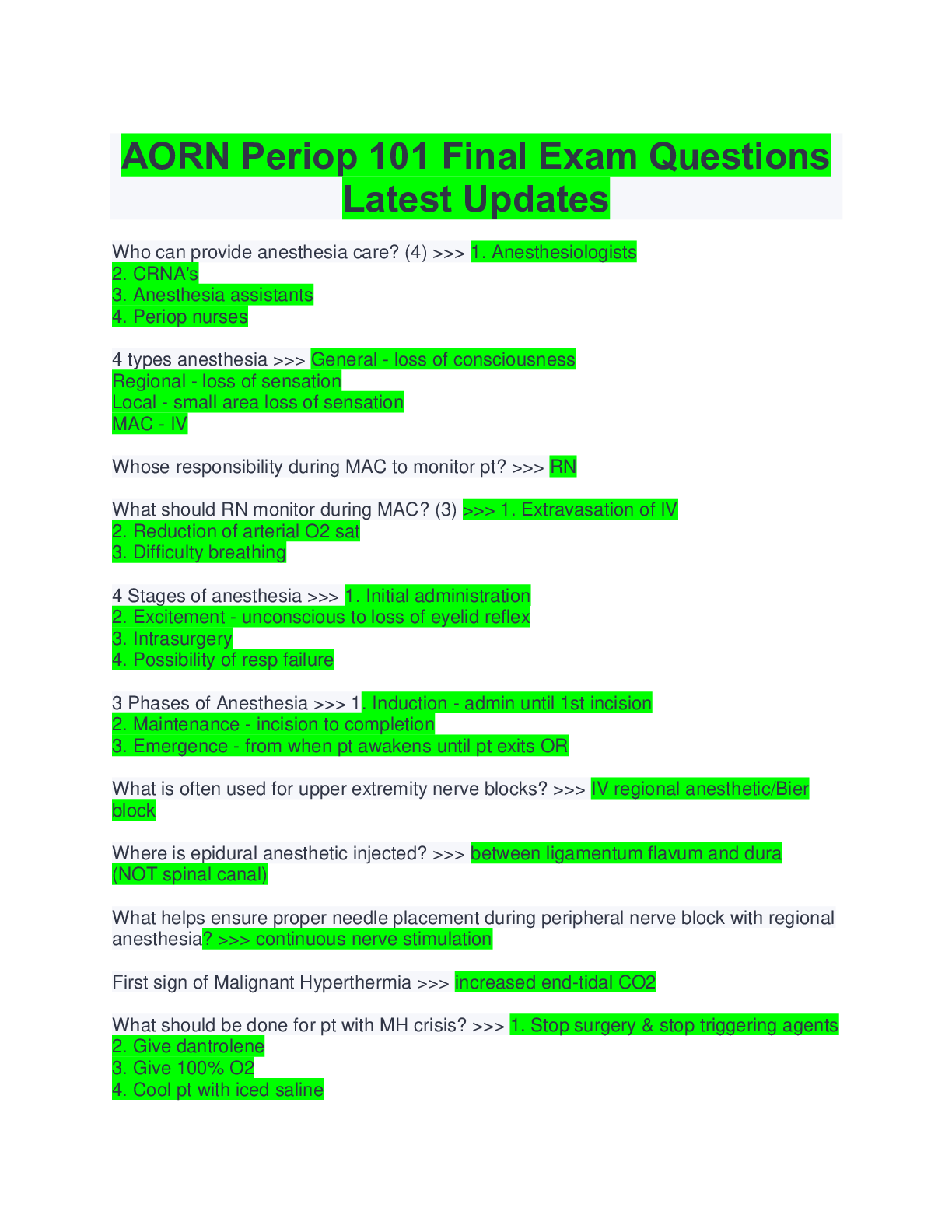






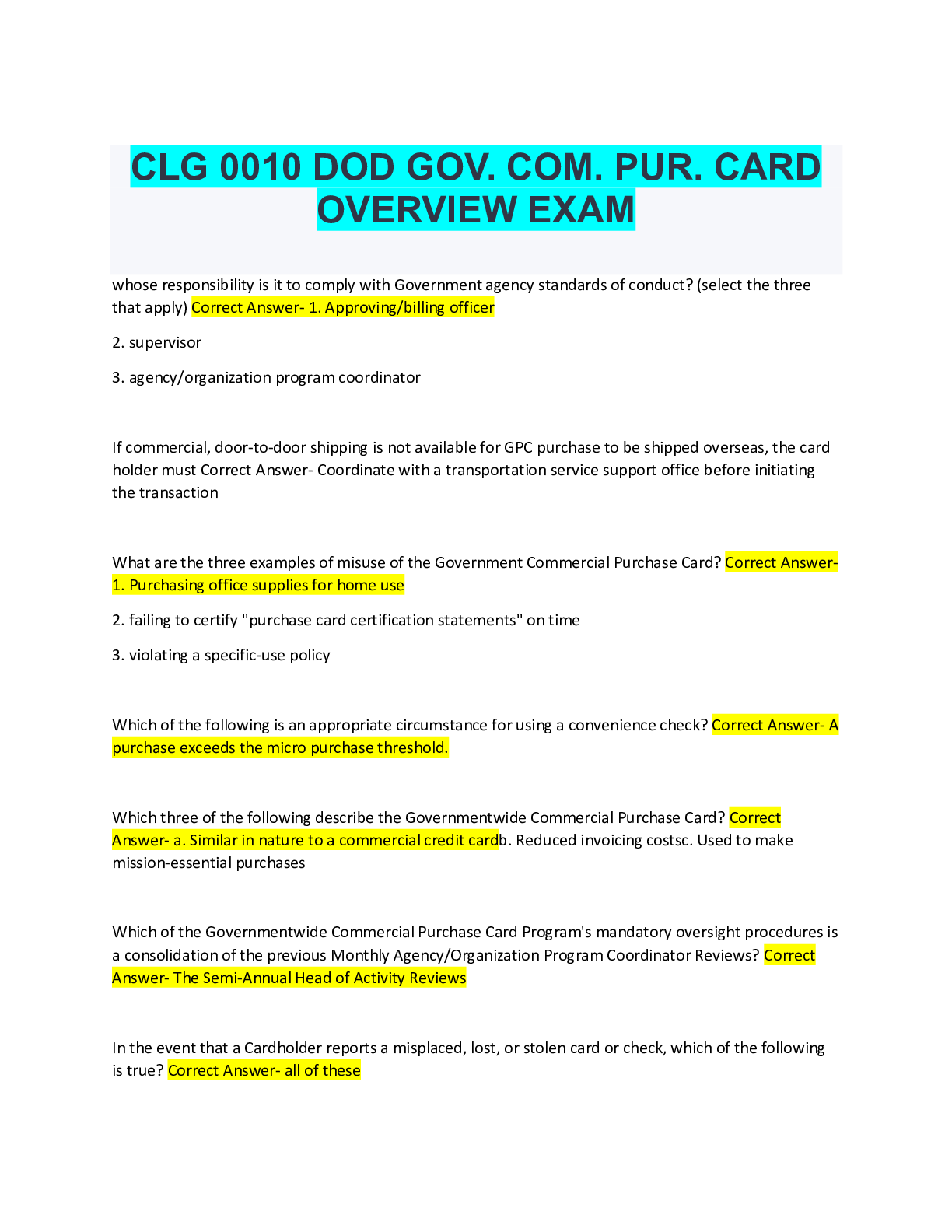


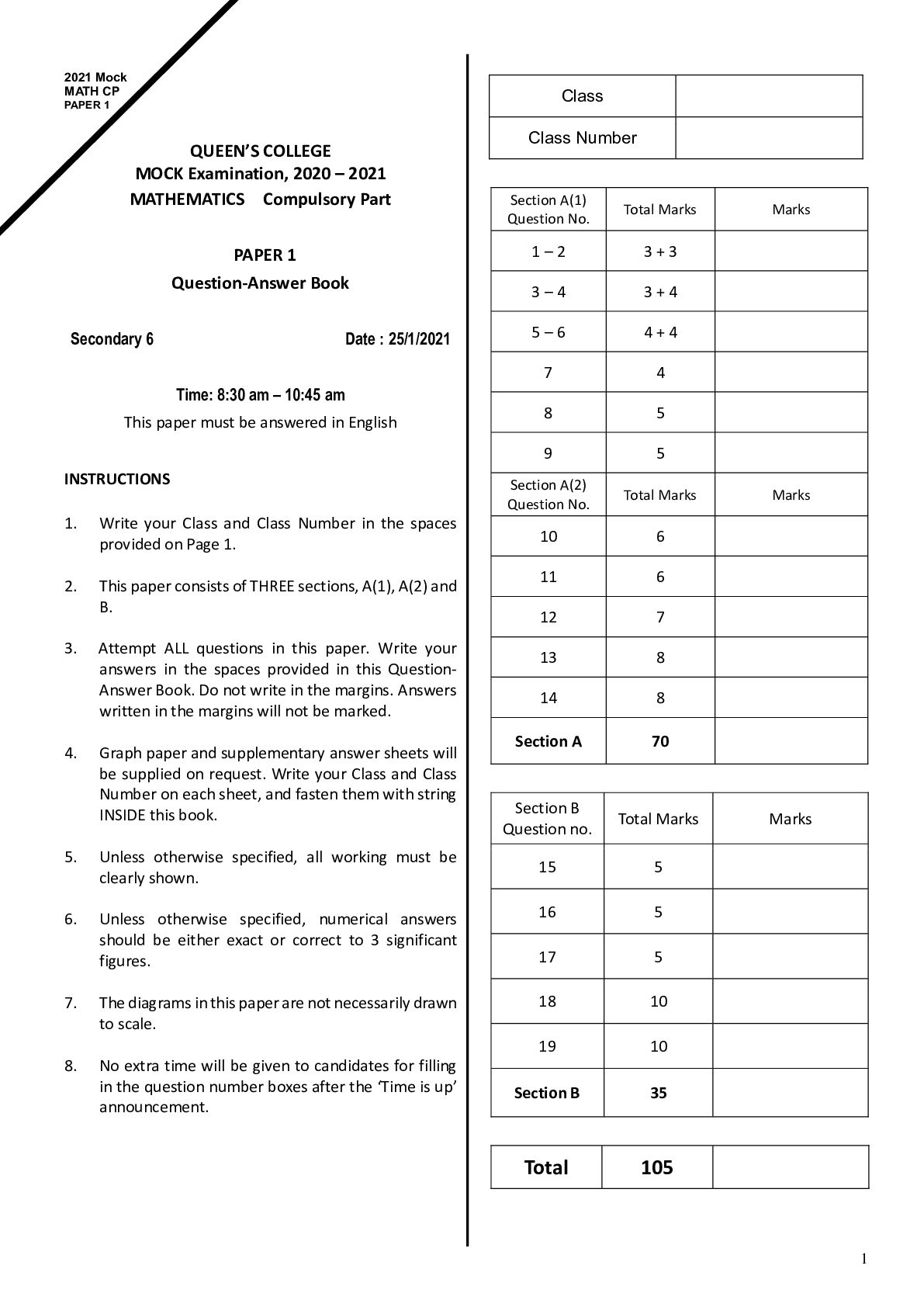
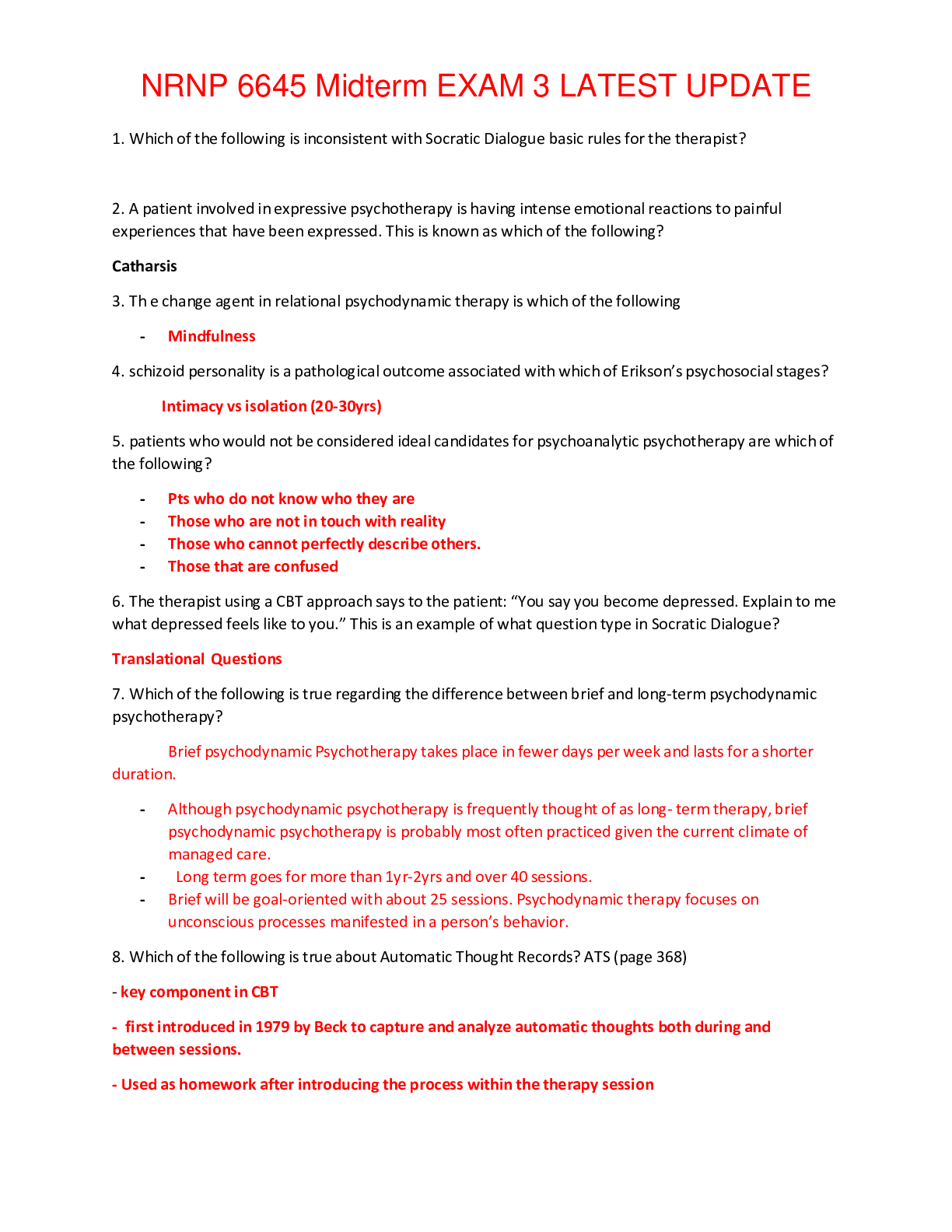

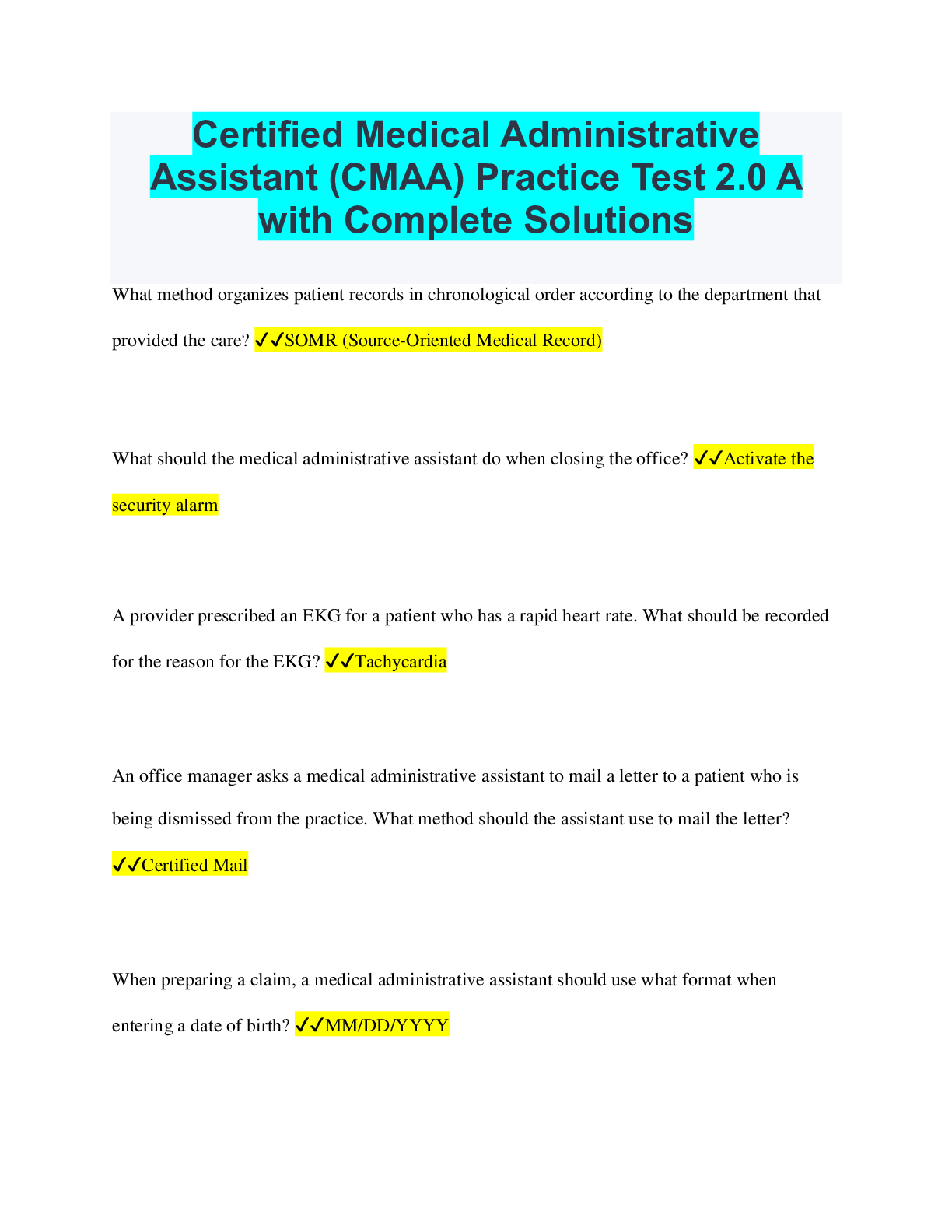
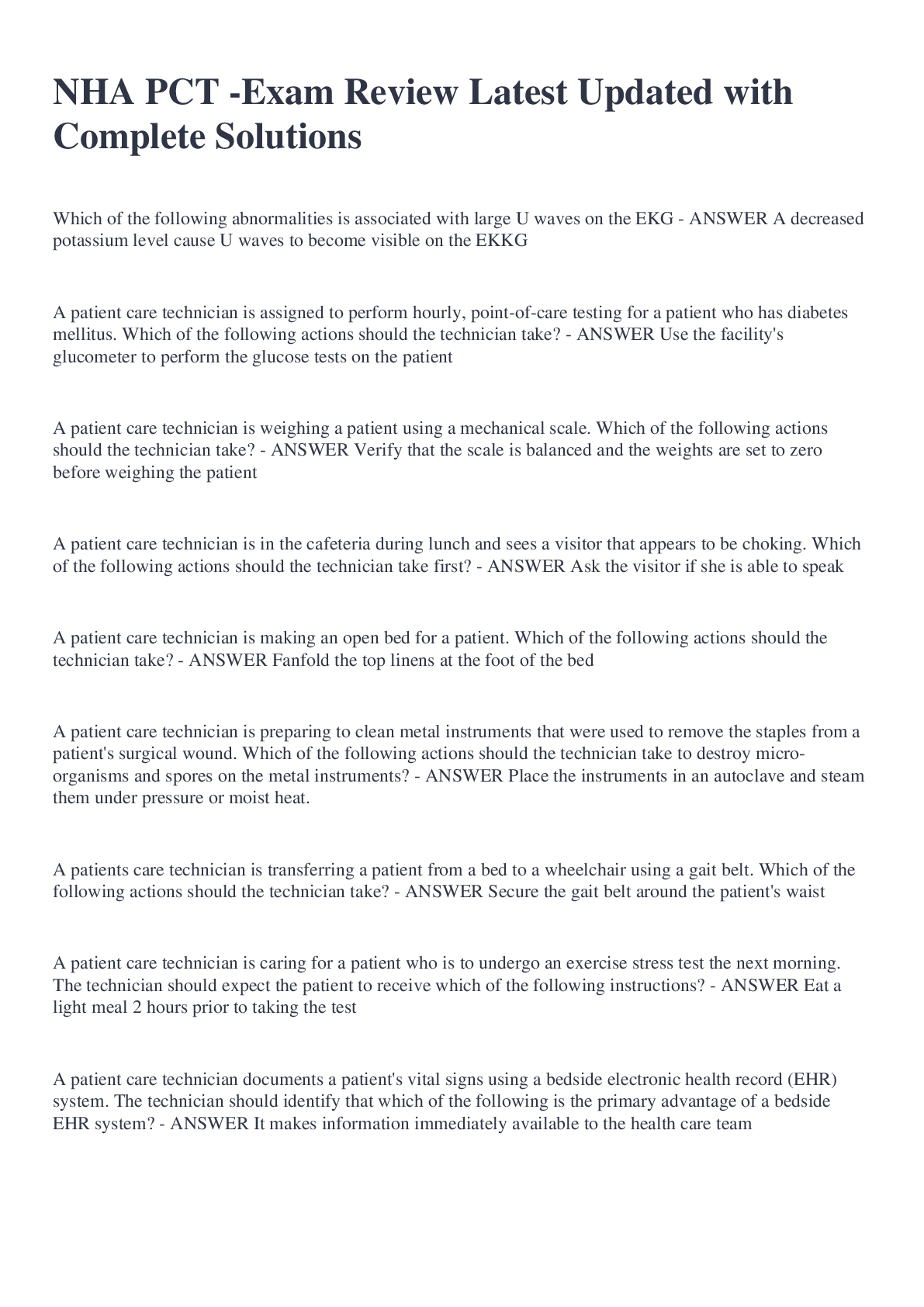


 Complete Chapters Test Bank Questions with Solutions Newly Updated.png)
.png)
